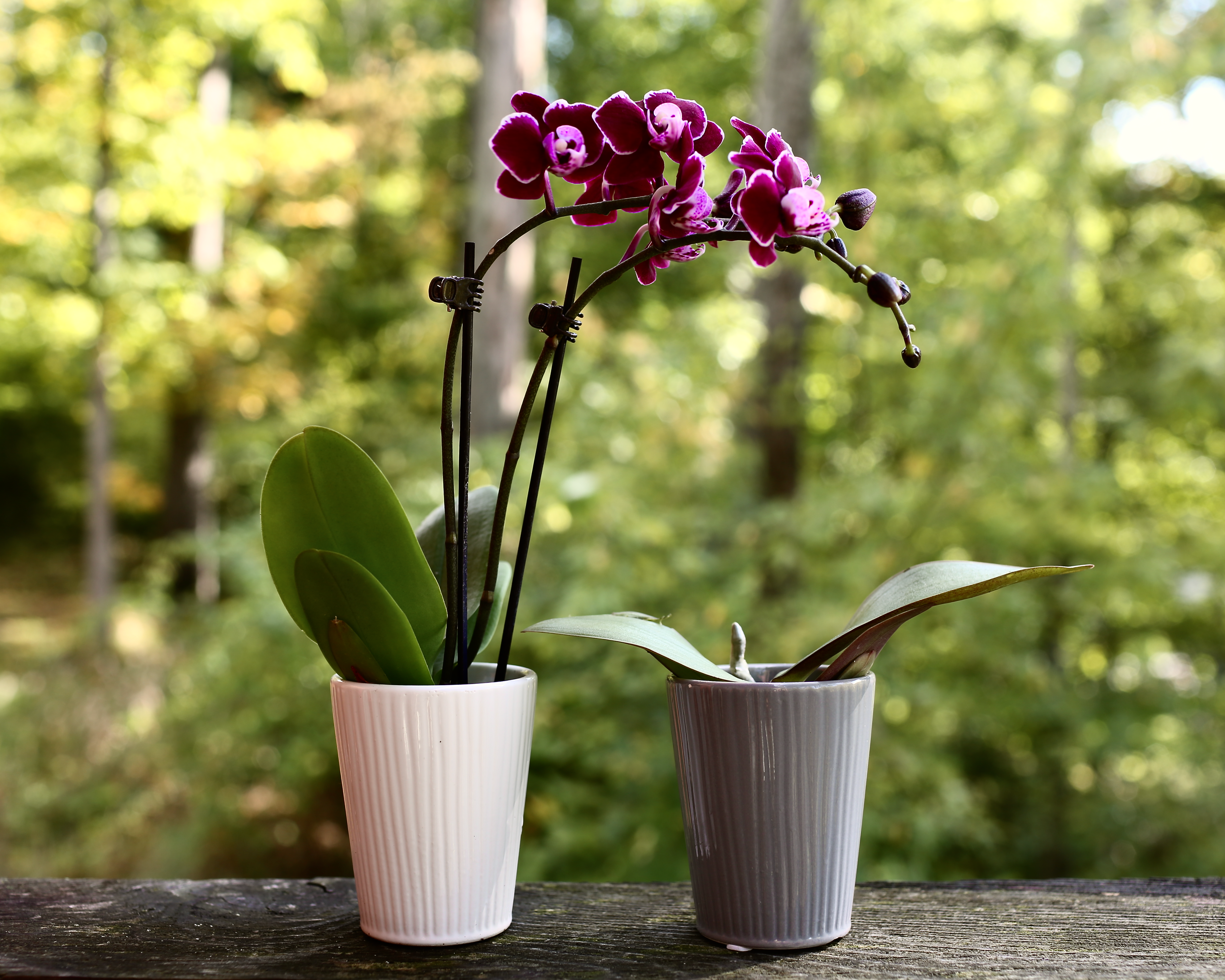
When properly cared for, your orchid plant will rebloom year after year. Has it been a minute since you got your orchid to bloom? There’s a good chance it’s in its dormant state, but if it’s been longer than six to nine months since it stopped blooming, there are seven reasons you may not have seen any new blooms.
You can find general information on how to trigger orchid reblooming in this previous blog post, but if you’ve tried those tricks and you still don’t see any signs of reblooming, you may have one or more of these problems.
In the same way children grow out of clothes, your orchid may be outgrowing its pot! Follow these simple instructions to repot your orchid into its new digs with the proper potting mix. While you’re at it, save some time and buy a repotting kit!
When your orchid is in the dormancy stage, it still needs regular watering. Keep up your routine of watering your orchid with three ice cubes for premium orchids, two cubes for a petite orchid and one ice cube for mini orchids. If you have more than one plant in a single planter, be sure to give each plant its own set of cubes.
During the dormant stage, which can last six to nine months, your orchid will grow a new leaf, which is needed before it can produce another flower spike. In general, Phalaenopsis orchids will only produce one flower spike per leaf. For a new leaf to grow, you need to replenish the nutrients the plant receives by feeding your orchid every other week. Use a balanced houseplant fertilizer at half the recommended strength.
To fertilize, remove the grower pot from the decorative pot and put your orchid in the sink. Lifting the leaves to avoid getting them wet, pour in fertilizer until liquid comes out of the drainage holes on the bottom of the pot. Allow your orchid to drain before returning it to the decorative pot. Skip ice cube watering on fertilizer weeks.
Make sure you place your orchid in a spot where it will get plenty of indirect sunlight. This is still very important to help your orchid produce the new leaf it needs for producing a flower spike. If you don’t have enough light coming in your windows, consider purchasing a grow light.
In their native tropical environment, tree-dwelling Phalaenopsis orchids gather much of the water they require from the humid air, drinking in moisture through their exposed roots. Orchids will thrive at humidity levels between 55% and 75%. If the humidity in your home or office drops too low, your plant will be deprived of the moisture necessary for healthy growth, and emerging flowers and leaves may be deformed.
During the winter and in dry climates, you can increase humidity levels by running a humidifier in the same room as your orchid. Turn off the humidifier in the evening to prevent fungal growth from forming on moist leaves and stems.
There’s a good chance your orchid is still just resting. If the leaves are still green and healthy, give it more time before you call it quits. A healthy, resting orchid has roots that are green or white and plump or firm to the touch.
Despite your best efforts, your orchid may be dead. A telltale sign that your orchid is dead is if the crown — the part of the plant that connects the leaves and the roots — is brown and mushy. This usually happens with overwatering.
Find more tips for triggering orchid reblooming here. Tired of waiting for your orchid to rebloom? Buy a companion plant and enjoy the flowers while you wait.

Copyright Just Add Ice® Orchids 2023